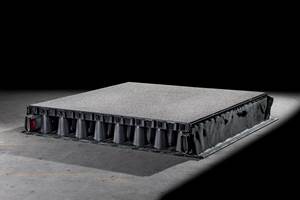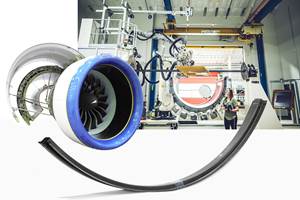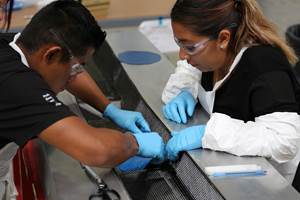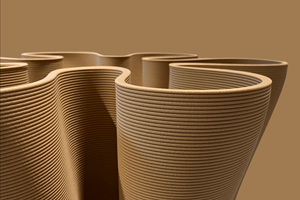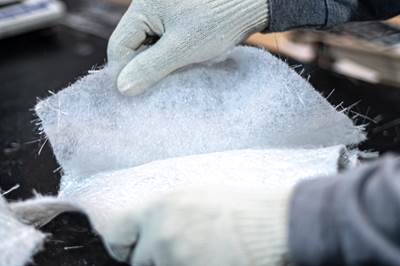High-velocity fan technology for fiberglass dust cleanup
CAMX 2024: SonicAire presents dust-control fans to simplify dust cleanup in fiberglass facilities using its high-velocity BarrierAire technology.
Share

Source | SonicAire
SonicAire (Winston-Salem, N.C., U.S.) is presenting NFPA-compliant solutions in the form of its proprietary BarrierAire fan technology, engineered to automate overhead housekeeping, control combustible dust buildup and eliminate the need for manual dust cleanup in fiberglass facilities.
The dust control fans are specifically designed to prevent dust from settling in hard-to-reach areas. Their high-velocity airflow prevent combustible fiberglass dust particles from settling on overhead structures, which can improve facility safety. In addition, thermal current control helps prevent dust buildup in inaccessible areas prone to fire and explosion risks.
Fully automated, SonicAire fugitive dust management simplifies the task of maintaining cleanliness and safety in fiberglass facilities. This not also eliminates the need to schedule weekend work, extend business hours or halt production for cleaning purposes.
Various SonicAire fan options are available, including:
- Pro Series: For typical fiberglass environments.
- Extreme Series: For harsh fiberglass manufacturing environments, including the only dust control fan certified for Class II, Div. 1 hazardous locations.
- Specialty Series: For custom fiberglass applications.
- Command Series: Customizable fan control systems for optimal operation in each fiberglass setting.
In addition, SonicAire provides complimentary dust management plans and ROI analysis. Its engineering team will create a tailored analysis demonstrating how SonicAire fans can minimize combustible dust buildup, enhance worker safety and productivity, and provide compliance with OSHA regulations. The team will also deliver an ROI analysis outlining long-term cost savings.
Related Content
-
CirculinQ: Glass fiber, recycled plastic turn paving into climate solutions
Durable, modular paving system from recycled composite filters, collects, infiltrates stormwater to reduce flooding and recharge local aquifers.
-
The potential for thermoplastic composite nacelles
Collins Aerospace draws on global team, decades of experience to demonstrate large, curved AFP and welded structures for the next generation of aircraft.
-
Composites manufacturing for general aviation aircraft
General aviation, certified and experimental, has increasingly embraced composites over the decades, a path further driven by leveraged innovation in materials and processes and the evolving AAM market.
Related Content
CirculinQ: Glass fiber, recycled plastic turn paving into climate solutions
Durable, modular paving system from recycled composite filters, collects, infiltrates stormwater to reduce flooding and recharge local aquifers.
Read MoreThe potential for thermoplastic composite nacelles
Collins Aerospace draws on global team, decades of experience to demonstrate large, curved AFP and welded structures for the next generation of aircraft.
Read MoreComposites manufacturing for general aviation aircraft
General aviation, certified and experimental, has increasingly embraced composites over the decades, a path further driven by leveraged innovation in materials and processes and the evolving AAM market.
Read MoreSulapac introduces Sulapac Flow 1.7 to replace PLA, ABS and PP in FDM, FGF
Available as filament and granules for extrusion, new wood composite matches properties yet is compostable, eliminates microplastics and reduces carbon footprint.
Read MoreRead Next
Ilium Composites introduces ULTImat fire-resistant fiberglass
A fire-retardant structural core layered with fiberglass and an integrated surface veil meets fire safety standards for closed mold composite parts.
Read MoreDust mitigation on a massive scale
Dust containment systems manufacturers talk about the recent philosophical trend from source-point capture to dust-mitigation chambers and the practical effects of such a massive shift.
Read MoreVIDEO: High-volume processing for fiberglass components
Cannon Ergos, a company specializing in high-ton presses and equipment for composites fabrication and plastics processing, displayed automotive and industrial components at CAMX 2024.
Read More
